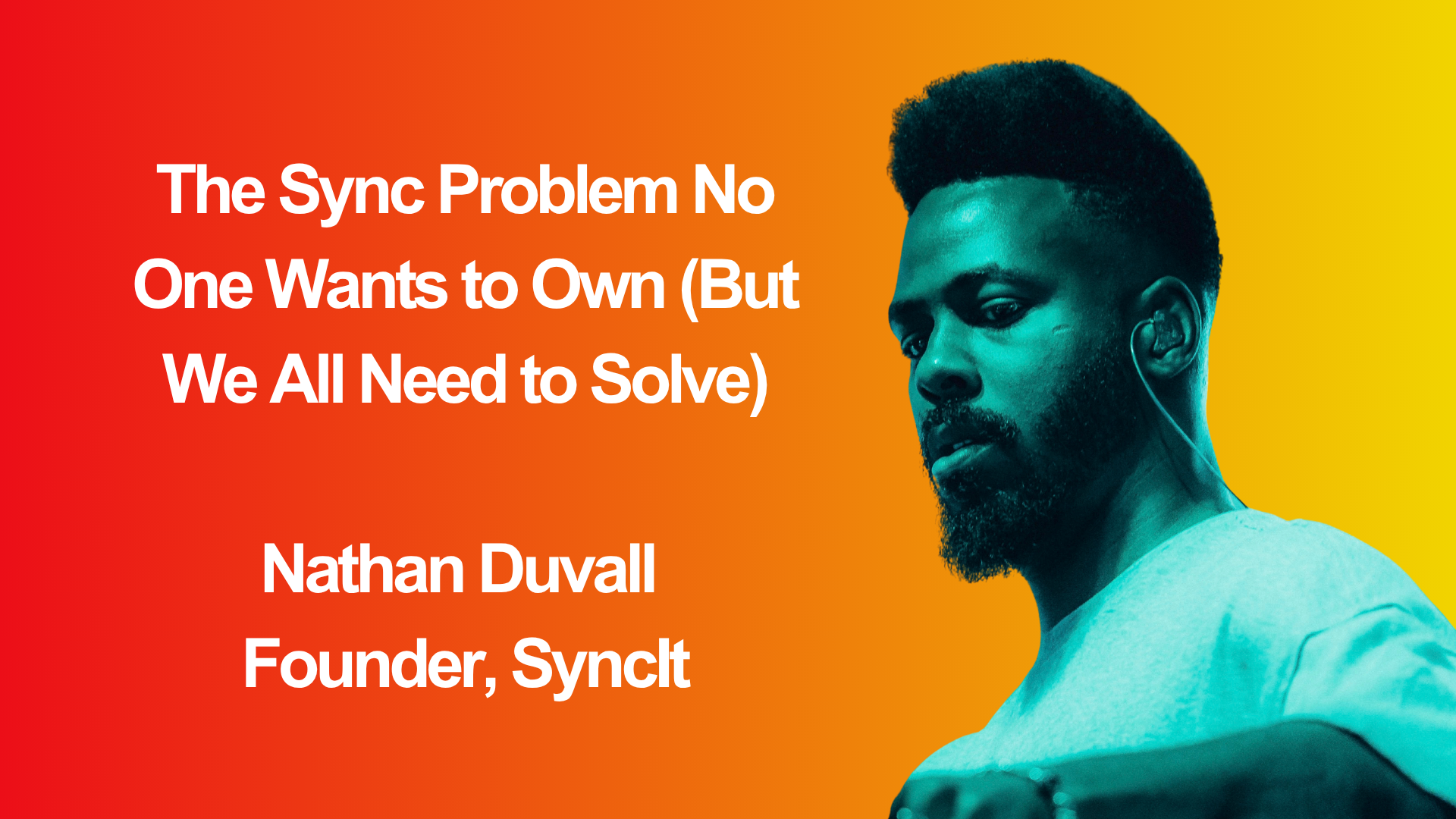By Nathan Duvall, Founder, SyncIt
We talk a lot about discovery, playlists, and AI tools but the truth is, the sync world isn’t broken because of creativity. It’s broken because of clarity.
Every week, brands, agencies, and producers reach out searching for “the perfect track.” and, although tools are being created to elevate the pinpoints in discovery, the real question is: who actually owns it, who can clear it, and how fast can we use it before the moment’s gone?
Music moves at the speed of culture now. We have 15-second reels, ad drops, game launches yet clearance still moves like it’s 1998. One PDF attachment, one wrong contact, and suddenly a project goes from inspired to expired.
The problem isn’t that there’s too little music. It’s that the industry still treats rights data like a locked filing cabinet instead of a living network.
The Three Big Gaps
- The metadata maze
Ownership lives in five different places. Label, publisher, PRO, sub-publisher, and someone’s inbox. ISRCs, ISWCs, and split sheets exist, but they rarely line up. So even when a song is perfect, no one can prove it fast enough.
- Clearance at human speed
The clearance process is a relay race of emails, lawyers, and “just checking who owns 12.5%.” Brands lose the creative moment, and artists lose opportunities.
- Generative AI
Generative tools can make usable music in seconds. This sounds like a brand’s dream – not having to clear licenses while being fully in control of the usage in perpetuity. But this will end up being a nightmare as generative AI is in hot water as it’s trained on existing music and is subject to copyright infringement. This is something brands can’t afford to be a part of. So, the only solution is making it easier for people who want music to license it as fast as AI can make the soulless music.
The Shift (I Hope) That’s Coming
What’s next for sync isn’t another platform. It’s infrastructure.
- Rights graphs instead of spreadsheets. Living maps that show who owns what, where, and under what terms — searchable in seconds.
- Provenance as proof, not promise. Watermarks and blockchain-style attestations will turn ownership from opinion into evidence.
- Licensing-aware search. Search engines that don’t just find the vibe, but understand the context — region, term, budget, exclusivity.
- Usage-based pricing. Not “flat fees,” but smart pricing that reflects where a track is used and how far it travels — fair to both sides.
The Mindset Shift
We need to treat rights data the same way we treat a mix: balanced, transparent, engineered for clarity. Imagine a world where every track comes with a confidence score. That would change everything from how brands shortlist music to how creators are discovered.
At its core, sync should be the purest form of collaboration. Sound meeting story, brand meeting emotion. But right now, the pipes are rusted. And while everyone’s building new playlists, no one’s fixing the plumbing.
If we want artists to win, if we want music to move culture forward, we need systems that move as fast as inspiration.
The tech is ready. The data exists. What’s missing is the will to connect it all.
That’s the challenge worth solving.

